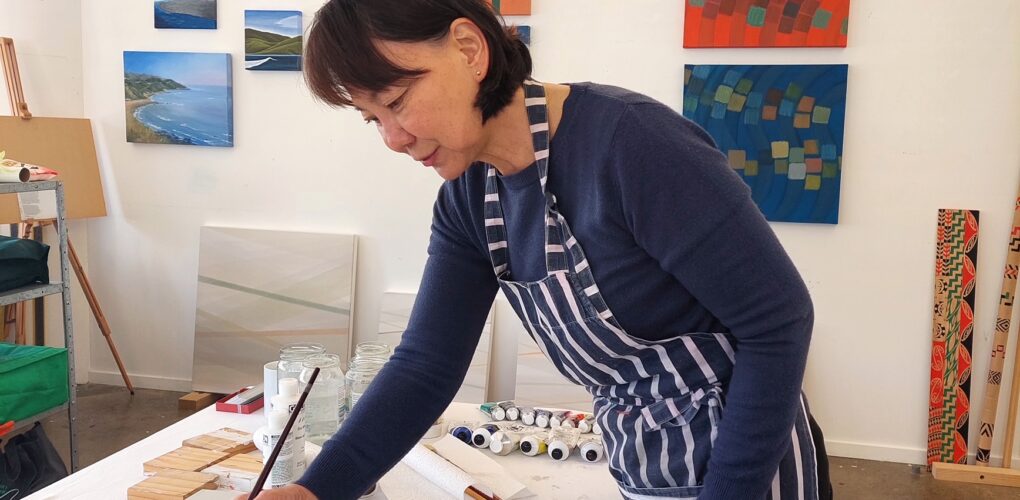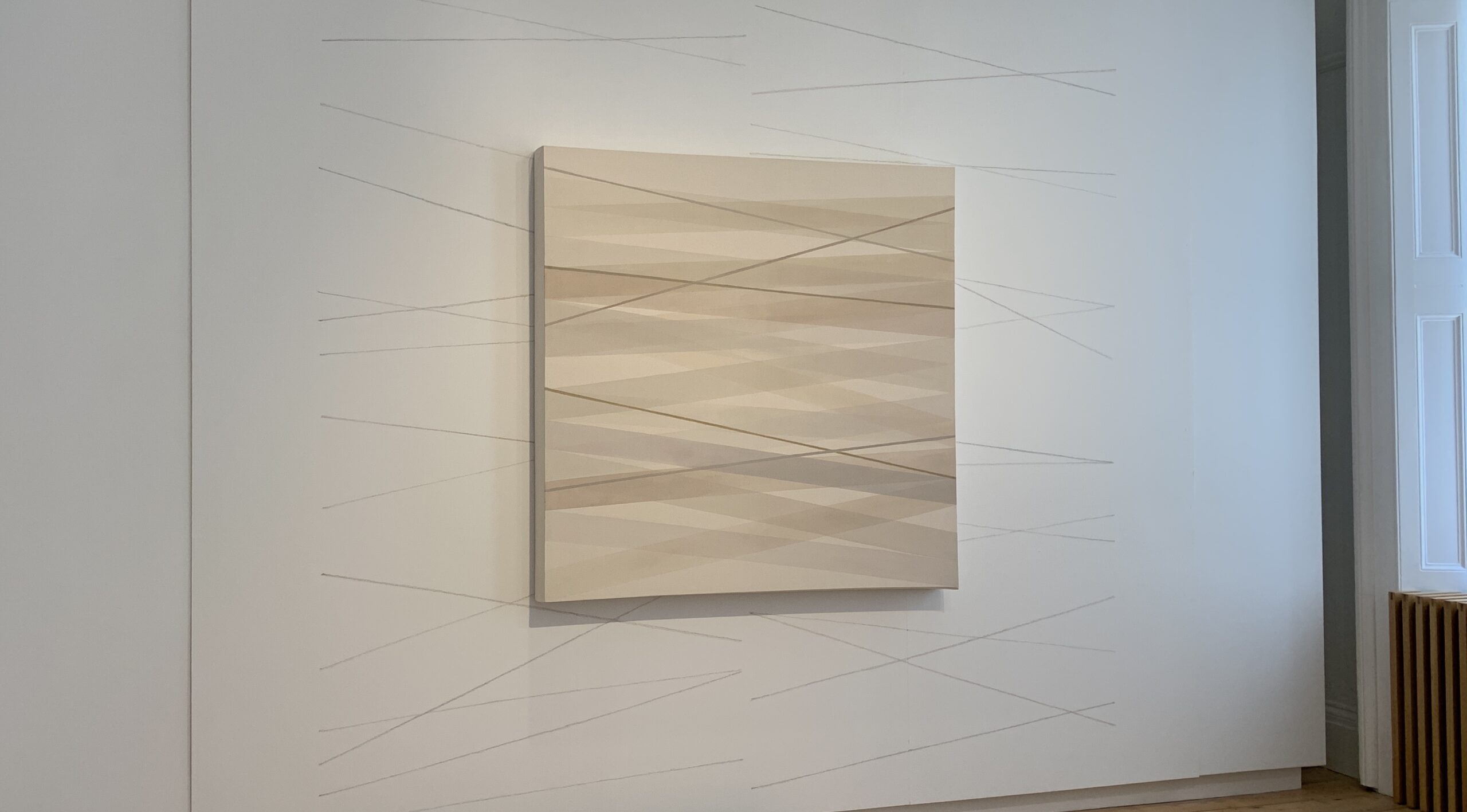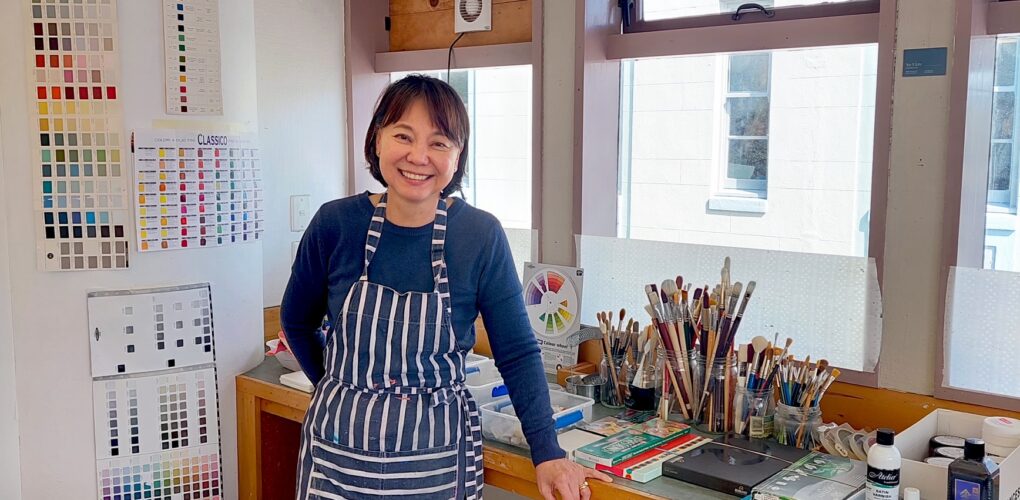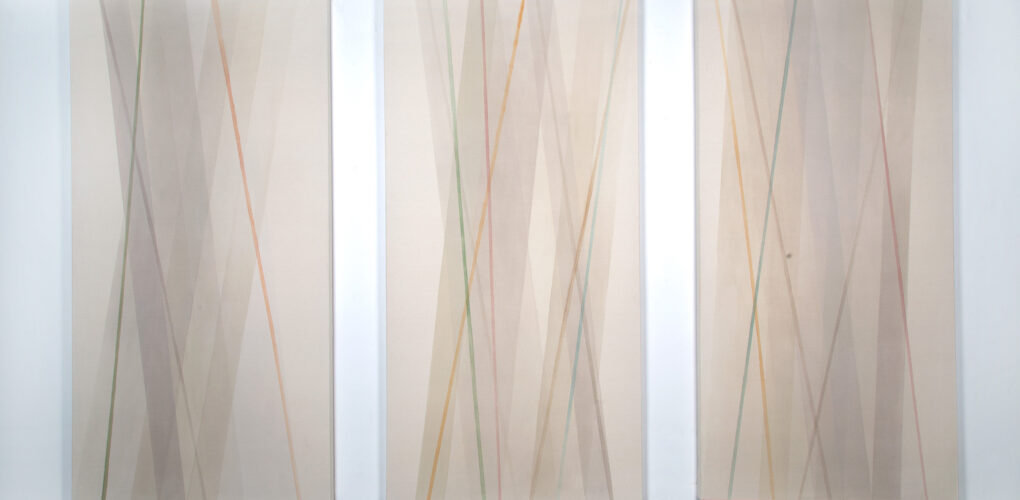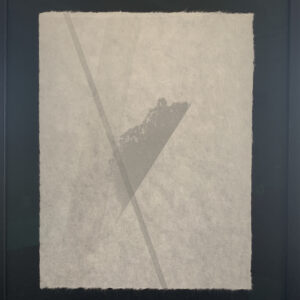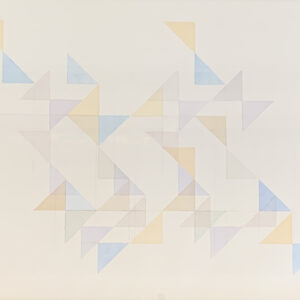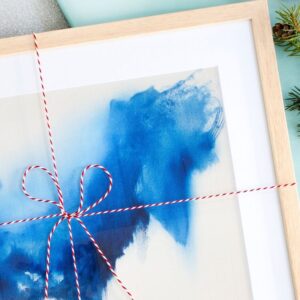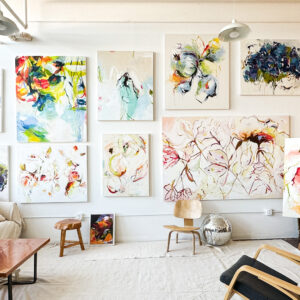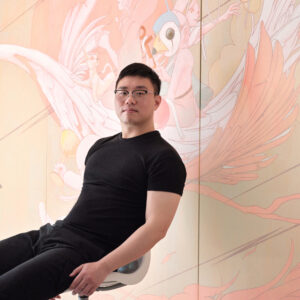One to Watch
 Finding Equilibrium with Yon Yi Sohn
Finding Equilibrium with Yon Yi Sohn
Yon Yi Sohn’s artistic practice primarily explores the delicate balance between repetitive work and spontaneity. Synthesizing the teachings of Stoicism and Zen Buddhism with mathematical concepts, Yon Yi creates minimalist compositions which rejoice in the tension between geometric symmetry and natural variation. Likewise, her work is influenced by her childhood in South Korea and reflects a philosophical approach to the modern condition.
Currently based in New Zealand, Yon Yi holds a variety of degrees in various fields, including an MA in Painting. She has also participated in numerous group and juried exhibitions in London and New Zealand.
Tell us about who you are and what you do. What’s your background?
Originally from South Korea, I have lived and worked in different parts of the world. I worked in the marketing communications field for many years in Hong Kong before taking on my earlier interests in drawing and painting. I have a BA in English from Korea University in Seoul, an MA in Journalism from the University of Missouri-Columbia, a Diploma in International Advertising, a Certificate in Art and Design from Hong Kong University, a BFA from Massey University Wellington in New Zealand, and most recently an MA in Painting from the Royal College of Art in the United Kingdom.
What does your work aim to say? What are the major themes you pursue in your work? Can you share an example of a work that demonstrates this?
Equilibrium, mathematical beauty, geometric elegance. Deliberation and spontaneity. Freedom within self-imposed rules and systems. I was raised in Korea with Buddhist, Taoist, and Confucius teaching and a Stoic attitude during my childhood. I think these principles are now coming back to me as I approach the later stage of my life, even after spending most of my adult life in Western society. I consider my work more like a daily ritual, similar to zen meditation exercises—mixing colors and applying them repeatedly, almost mechanically—or a zen dialogue. I often find myself questioning and responding in turn to the work.
Can you walk us through your process for creating a work from beginning to end?
My work usually starts with a specific plan; however, I leave room to improvise and respond to how the image develops throughout the process. Mixing primary colors to make a neutral grey, then adding the thin layers of grey until certain patterns emerge, I finish the work by enhancing those emergent shapes and lines with subtle colors. It’s a kind of division of space through the arrangement of colors, analogous and complementary, and lines and shapes—a meditation on the angles and emergent colors, an experiment in simplicity. Though my intention is for balance and equilibrium, I sometimes seek an element of instability in the final work. I believe this delicate tension is also a reflection of how our lives pan out on a daily basis. In my works, there is joy in drawing simple lines and observing and participating in how the lines interact and correspond.
Who are your biggest influences, and why?
My biggest influences are Agnes Martin for her soft, gentle, and meditative works, and Gerhard Richter, for his attitude of continuous reinvention and development.
How does your work comment on current social and political issues?
I believe that many social and political issues nowadays are partly due to the fact that we have forgotten to be receptive and open-minded in our response to the issues and situations surrounding us. I would say that my work is more of a philosophical approach to the current issues, created with acceptance, tolerance, patience, understanding—though not necessarily agreement—and recognition of differences.
How do you hope viewers respond to your works? What do you want them to feel?
My work facilitates more of a relationship between the teller of the tale and the tale itself. This process, in theory, could be never-ending. The goal may be to reach a state of the aesthetic sublime, where process and image are reciprocal. However, it is the journey there which matters to me. I hope my works convey that feeling to the viewers.
Do you prefer to work with music or in silence?
I prefer to work with music, especially classical music. The system and logic in the composition, harmonies, themes, and variations of classical music help the rhythmic interference patterns in my work, resulting in a kind of synesthetic color play. Music is a mathematical algorithm, says Yuval Noah Harari in his 2015 book Homo Deus. I think I can relate to that.
Who are your favorite writers?
Nikos Kazantzakis’s book Zorba the Greek talks about freedom, love, happiness, and being the recipient of nature and harmony in a positive and actively participating way. I am currently reading Yuval Noah Harari’s Homo Deus for the second time: an excellent summary of humanism, individual freedom, and autonomy. I think I am a kind of liberal humanist in that sense.
Love reading about all things art? You can have articles from Canvas, curated collections, and stories about emerging artists delivered straight to your inbox. Sign up for the Saatchi Art Newsletter.
